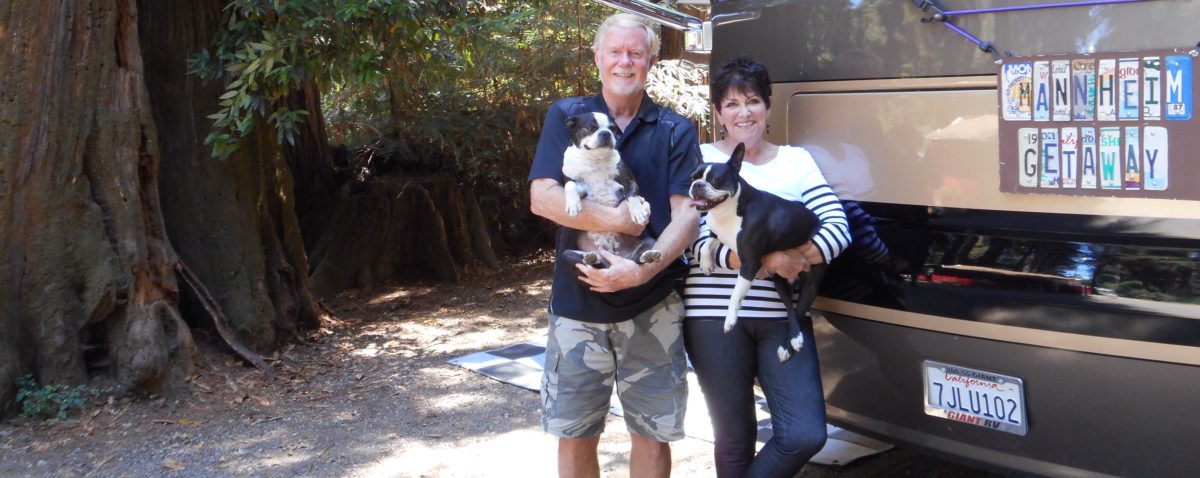The Winter of 2022-23 has been the coldest and wettest one that we’ve seen in our almost five years here in the Mojave desert.

Typically, December and January are our coldest months, with overnight lows in the high 20’s and daytime highs in the 50’s and 60’s. Normally, these temperatures rise by ten degrees in February and March, and by April we are seeing highs in the 70’s and occasional 80’s.
We are in the third week of March right now (Spring officially starts today), and it is rainy and cold. This has been an above-normal rain year, which is much needed since the Southwest has been in a drought state for the past decade or so. I do a lot of hiking in the desert and mountains around Mesquite, and I’ve seen very little wildlife in the past several years. The vegetation has been parched and struggling to survive, even the Joshua trees. Lizards and horned toads are in hiding.

Not the case this year.
Twelve so-called “atmospheric rivers” coming out of the mid-Pacific Ocean have pounded the West coast since December, soaking the cities, piling up snow in the mountains, and filling up reservoirs. Another one is due this week.

Our little desert town of Mesquite, Nevada is roughly 400 miles northeast of Southern California. We are somewhat in the “rain shadow” of the Sierra Nevada mountains (of California) and, typically, those very high mountains wring most of the moisture out of the storms that come in off of the Pacific so that we only receive a fraction of the rainfall that hits California. However, this year there has been plenty of rain for us and we are eternally grateful.

Southern California is a basin surrounded on the north and east by high mountains (San Gabriel Mtns, San Bernardino Mtn, and the San Jacinto Mtns), all of which have peaks up to 10,000 feet. Normally, snow falls there in the Winter in very modest amounts, allowing for a number of ski resorts to operate with maybe five feet of snow dept in a good year. Southern California rainfall this year has been at least twice that of normal years, resulting in lowland flooding and almost-historic depths of snowfall in the San Bernardino mountain resort community of Big Bear. Roads were impassible, home roofs collapsed, and ski resorts had to close due to excessive snow. What a mess!

I used to ski often at the Mammoth Mountain resort in the central Sierra Nevada mountains. I experienced some pretty heavy snowpack up there (i.e. ten feet of packed powder) in snowy Winters. However, this year has seen the heaviest snowfall on record, with something like 780 inches falling on the resort.

The scenes on the news from Mammoth have been incredible, with chairlifts inoperable due to 20′ to 30′ drifts. I feel bad for the operators of Mammoth, as there is, incredibly, too much snow in the Sierras for skiers to: a) get up I-15/Hwy 395 from Southern California; and, b) to ski once they get there.



On the other hand, that pile of snow will be there all the way through Spring, enabling skiers to enjoy the mountain until July 4th.

More importantly, all of that Sierra Nevada snow will eventually melt and the runoff will fill up California’s drought-stricken reservoirs and replenish, to some degree, the groundwater aquifers . This is incredibly important, as California is, by far, the Nation’s preeminent agricultural State and needs lots of water to grow all of those crops.

There has actually been so much rain this year that agricultural areas in Monterey and San Joaquin counties have flooded. Ancient Lake Tulare, a dry lake in the southern San Joaquin Valley, is now filling up from floodwaters released from local dams. This should help replenish, to some extent, local groundwater aquifers that have been stressed in recent years.


There has been significant erosive damage/landslides along the California coast, causing homes to slide into the ocean and major highways to be blocked.


At the end of our 2022 RV road trip, we drove by Shasta Lake on the way home from Oregon. It appeared to be about 25 percent full, causing lake recreation and houseboat businesses to essentially shut down. Thankfully, this year’s torrential pounding from those Pacific storms has caused the Shasta Lake level to rise about 100 feet thus far… and the Spring snowmelt has yet to lend a hand.


Just what the doctor ordered!
Closer to home, Lake Mead is rising, as well. It, along with Lake Powell, are the two main reservoirs of Colorado River runoff from the Rocky Mountains. This water is essential for agriculture and the urban areas of the Southwest. Our good friend “Jason”, who lives in Denver, has told us that it’s been a very good snow year in the Rockies, which promises some much-needed Spring runoff that those huge reservoirs are so desperate for.

The mega-drought that has plagued the Southwest isn’t over, but this year’s generous helping of rain should stave off disaster for a few more years.
Hopefully, the land developers and water district officials won’t overreact to one year of plentiful rain to justify more city-building and less water conservation. The groundwater aquifers that have saved our bacon in recent years have been “mined” extensively; one year of plentiful rain doesn’t change the fact that we’re in a long-term drought situation, and conservation measures are still justified if this arid region is to survive.
We can hardly wait for Spring to actually manifest itself: I want to use my patio and barbeque!
C’mon, Mother Nature, you’ve had your fun, now let us be.
